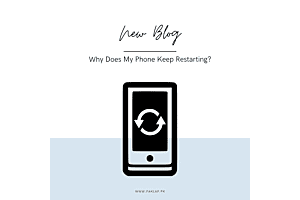Education during COVID-19...educa-shunned?
However, the rise in home-schooling in response to this pandemic has severely hit their parents’ productivity at home, raising questions regarding their at-home commitment levels to work and their ability to produce results. The fact that the entire educational system has shifted online poses several other problems. Teaching has moved online at an unprecedented scale, from lectures to assignments to exams all being conducted online, which has never been done before. Prior to the pandemic, online classes and online learning resources were a big thing. AAP ne Khan Academy ka Suna hee Hoga. The difference now is that you do not have teachers specialized in teaching online teaching, every teacher is now online. This includes senior members of faculties with tenure, who can barely use a smartphone (i mean this with zero disrespect - it is the experience and unique teaching styles that make such teachers invaluable assets to educational institutions). These experienced teachers are not suited to the new online dynamic. Plus, without a transitionary phase to the move online, most teachers, young and old, have had a difficult time adjusting to the new sphere of education. Students are frustrated. Teachers are frustrated. All of this while the lives of everyone involved get disrupted from head to toe. Let’s not even mention the economics of this just yet.
In what the world is calling a complete disaster, every industry in every market in every country around the world has been affected. We see governments crippling under the weight of their debts, educational institutions crippling due to the lack of enrollment and in-flow of precious US Dollars, while the global healthcare system has fallen to pieces. What we saw as oh-so-perfect seems oh-not-perfect-at-all. You might say everything was a sham. Multinational giants like Deloitte ended up reporting a $6 Trillion loss, with huge retailers like Neiman Marcus and J.C Penney filing for bankruptcy. Virgin Australia has also declared bankruptcy and is on the market to be bought out by some other airline. Supercar giant McLaren has mortgaged its entire heritage car collection to stay afloat. Car lovers will know what this means. They have mortgaged their heart and soul, a testament of their legacy just to stay afloat and breathe through this pandemic. Here’s a statistic everyone will understand. Remember how we used to hear about how many thousand new cars are registered in Sindh alone? Remember the surge of motorcycles on the roads which we gave credit to Jeeto Pakistan for? Not one new vehicle was sold in the month of April. NOT ONE. This isn’t Sindh, by the way. Not one new vehicle was sold in April across Pakistan. Lambi saans le lein. Intermission ke baad miltay hai.
Before the pandemic, education technology saw high rates of not only growth, but global adoption too. Global edtech investments reached $18.66 Billion in 2019. Since the onset of COVID-19, the 1.2 billion children outside the classroom have relied heavily on technology to ensure their education continues. Many digital platforms like Discord, Zoom, Google Classroom, and Microsoft Teams have provided the resources educators need to reach out to their students. The pandemic has already surged demands for various educational technology resources, such as language apps, virtual tutoring, and video conferencing tools.
Zoom has stepped in to save the day. Zoom is essentially Skype on steroids, but geared for education. You can conduct classes, take polls, create breakout rooms to ensure the aspect of teamwork stays alive. Zoom stock prices have surged over 100% since January, going to show that the entire world - essentially - has shifted education to Zoom.
Harvard, Yale, and MIT have published a library of free online classes to ensure access to even those who can not afford it. We are now in the midst of the largest “online migration” in the history of education. DingTalk, which is Alibaba’s distance learning solution, has deployed more than 100,000 online servers to support the increase in demands. Schools are partnering with broadcasting platforms to offer free education broadcasts to the local community. Media organisations like the BBC have gunned for virtual learning through Bitesize Daily which offers 14-week curriculum-based learning for kids across the UK. all this in response to high volumes in demands made by the public
The future of education is uncertain. The involvement of technology in education though is foolproof. The unplanned transition to online learning may produce poor user experiences in the meantime, but as teachers and students get adjusted to virtual learning, the results may differ. For example, Zhejian University has managed to get 5,000 courses online using Alibaba’s DingTalk. Many say that the online learning system allows for a greater reach to students and more effective engagement through live chats and meetings. Many teachers are also saying they might stick to online learning even after things get back to “normal.”
Research shows that with the right tools, online learning can help students retain 25-60% more material compared to in-classroom. This is because students can learn faster online keeping in mind the digital era we live in today. E-learning has shown to require 40-60% less time investment than regular classroom settings. This allows for students to learn at their own pace, speeding through some lectures while rewatching others. For kids, a more structured environment is required due to the ease with which kids get distracted.
We still do not have an answer. What will happen to education? Is online education the same as in-person education? The face of education sure has changed, and will continue to change as institutions will have to open back up slowly, following Government SOPs and social distancing and contact tracing protocols. This means more and more people will opt for virtual routes to education. Technology will play a big part in education for the foreseeable future. And it is technological innovations that will propel the virtual education industry to new heights. The incorporation of Augmented Reality seems likely. Eventually, the world will adjust to the “new normal” and education must adjust with it. The focal point still remains to be the role of technology in the “new” education industry around the world. Without the use of technology, education would’ve taken a halt as we know it.





